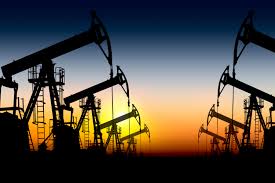Page added on June 18, 2014
IEA says ‘peak oil demand’ could hit as early as 2020
Little more that a year after the International Energy Agency added its voice to the chorus chiming that peak oil was dead, a new report from the uconservative adviser to industrialised nations suggests it has changed its tune. Only this time it is not peak supply that is on its radar, but peak demand.
The IEA’s Medium-Term Oil Market Report 2014 has predicted that global growth in oil demand may start to slow down as soon as the end of this decade, due to environmental concerns and cheaper alternatives, and despite boosting its 2014 forecast of global demand by 960,000 barrels per day.
 While supply is forecast to remain strong – thanks largely to the unconventional, or “tight” oil revolution currently underway in north America – the IEA says it expects the global market to hit an “inflexion point”, by the end of 2019, “after which demand growth may start to decelerate due to high oil prices, environmental concerns and cheaper fuel alternatives.”
While supply is forecast to remain strong – thanks largely to the unconventional, or “tight” oil revolution currently underway in north America – the IEA says it expects the global market to hit an “inflexion point”, by the end of 2019, “after which demand growth may start to decelerate due to high oil prices, environmental concerns and cheaper fuel alternatives.”
These factors, says the report, will lead to fuel-switching away from oil, as well as overall fuel savings. In short, it says, “while ‘peak demand’ for oil – other than in mature economies – may still be years away, and while there are regional differences, peak oil demand growth for the market as a whole is already in sight.”
It’s worrying news for the over-invested and under-prepared; not least of all oil importing nations, to which, as Samuel Alexander noted in this article last September, the economic costs of peak oil are especially significant.
“When oil gets expensive, everything dependent on oil gets more expensive: transport, mechanised labour, industrial food production, plastics, etc,” he wrote. “This pricing dynamic sucks discretionary expenditure and investment away from the rest of the economy, causing debt defaults, economic stagnation, recessions, or even longer-term depressions. That seems to be what we are seeing around the world today, with the risk of worse things to come.”
This then adds to the peak oil cycle, increasing governments’ motivation to decarbonise their economies – better late than never – “not only because oil has become painfully expensive, but also because the oil we are burning is environmentally unaffordable.”
This view has been echoed in numerous recent reports. US investment banks Sanford Bernstein raised the prospect of “energy price deflation”, caused by the plunging cost of solar and the taking up of market share by that technology as it displaced diesel, gas and oil in various economies. It predicted that could trigger a massive shift in capital.
Analyst Mark Fulton last month also questioned the wisdom of the private-sector investing over $1 trillion to develop new sources of high-cost oil production. While Mark Lewis, of French broking firm, suggested that $US19 trillion in revenues could be lost from the oil industry if the world takes action to address climate change, cleans up pollution and moves to decarbonise the global energy system.
The IEA report also includes an updated forecast of product supply, which draws out the consequences of the shifts in demand, feedstock supply and refining capacity.
“Given planned refinery construction and the growth in supply that bypasses the refining sector, such as NGLs and biofuels, the refining industry faces a new cycle of weak margins and a glut of light distillates like gasoline and naphtha as a by-product of needed diesel and jet fuel,” it says.
It also predicts that “the unconventional supply revolution that has redrawn the global oil map” will expand beyond North America before the end of the decade, just as OPEC supplies face headwinds, and regional imbalances in gasoline and diesel markets broaden.
The report projects that by 2019, tight oil supply outside the United States could reach 650 000 barrels per day (650 kb/d), including 390 kb/d from Canada, 100 kb/d from Russia and 90 kb/d from Argentina. US LTO output is forecast to roughly double from 2013 levels to 5.0 million barrels per day (mb/d) by 2019.
“We are continuing to see unprecedented production growth from North America, and the United States in particular. By the end of the decade, North America will have the capacity to become a net exporter of oil liquids,” IEA Executive Director Maria van der Hoeven said as she launched the report in Paris. “At the same time, while OPEC remains a vital supplier to the market, it faces significant headwinds in expanding capacity.”
Beyond ageing fields, the major hurdle facing OPEC producers is the escalation in “above-ground woes,” as security concerns become a growing issue in producers like Iraq, and investment risks deter investment and exploration.
The report notes that as much as three-fifths of OPEC’s expected growth in capacity by 2019 is set to come from Iraq. The projected addition of 1.28 mb/d to Iraqi production by 2019, a conservative forecast made before the launch last week of a military campaign by insurgents that subsequently claimed several key cities in northern and central Iraq, faces considerable downside risk.
14 Comments on "IEA says ‘peak oil demand’ could hit as early as 2020"


Davy, Hermann, MO on Wed, 18th Jun 2014 6:15 am
The IEA knows mentioning peak demand is acceptable with its patrons. If anyone has read between the lines of many of its other reports we see a PO message. There are those high up in the organization that have spoken off the record with PO concerns. Two of the most recent articles express concern with events in the ME and capex issues. PO is not about how much oil there is out there it is about flows. We all know that here. It is also about the net energy and quality of those flows as Short tirelessly reports on here. It is about price that Rock tirelessly comment on here. It is about systematic implication of limit of growth brought on by PO and food insecurity I tirelessly comment on here. Greg brought up a good point from the Hirsh report yesterday in that we are facing a liquid fuel crisis because there are no adequate alternatives to run the FF transport in this complex global world “Period”. So the IEA mentioning of cheap alternatives is mute on that subject. Even if there were cheaper liquid fuel alternatives the time frame is out of reach to transition without a collapse of a global world in constant need of growth to avoid collapse.
Beery on Wed, 18th Jun 2014 7:37 am
Peak demand, peak supply – it’s all the same thing. Supply and demand always go hand-in-hand. As Davy says, the spin you want to place on it for your audience determines how you phrase it, and reneweconomy.com’s audience probably won’t listen to anyone proclaiming “peak supply”, or that peak oil is alive and well.
However, the underlying message is that the global peak of oil production is here and that it’s time for economists to get scared, because the curtain is about to fall, exposing their pseudo-science for what it is.
Kenz300 on Wed, 18th Jun 2014 7:59 am
Quote — ” the IEA says it expects the global market to hit an “inflexion point”, by the end of 2019, “after which demand growth may start to decelerate due to high oil prices, environmental concerns and cheaper fuel alternatives.”
———————–
Cheaper alternatives ——- the price of oil, coal and nuclear keeps rising and causing environmental damage.
The price of wind, solar and other alternative keeps dropping…………
Price will speed up the transition to safer, cleaner and cheaper alternatives.
————–
How Fossil Fuel Interests Attack Renewable Energy
http://www.renewableenergyworld.com/rea/news/article/2014/05/how-fossil-fuel-interests-attack-renewable-energy
forbin on Wed, 18th Jun 2014 9:18 am
peak oil demand can be caused by yet another ( alright , a dip in the current recession if you insist) World Wide ( read USA mostly ) Recession .
then the IEA doesnt have to choke on the words ” peak – cough – oil – cough ”
still , where’s Abundant Concept when you need him ? 🙂
Forbin
get some popcorn in and watch the show – folks!
Dave Thompson on Wed, 18th Jun 2014 12:12 pm
“after which demand growth may start to decelerate due to high oil prices, environmental concerns and cheaper fuel alternatives.” What cheaper fuel alternatives? There are no alternatives for BAU when it comes to, bunker fuel, jet fuel, diesel, and gasoline for transportation.
J-Gav on Wed, 18th Jun 2014 1:13 pm
Hold on a minute Forbin. You sure you’re covered on ‘peak popcorn?’
sandu on Wed, 18th Jun 2014 3:36 pm
I will agree with ‘peak oil demand’ idea if 2 conditions are meet at the same time by 2020 :
– oil price under 110$ (in 2014 $)
– no recesion/stagnation by 2020
Norm on Wed, 18th Jun 2014 5:05 pm
Peak popcorn. Need popcorn for front row seats at Armageddon. ‘Peak Demand’. ROTFLMAO nobody wants oil anymore, as a result, they slowed down the extraction rate. I think the church folks might go along with such logic.
shortonoil on Wed, 18th Jun 2014 5:39 pm
Peak Demand, what a catchy little phrase. Sort of makes it makes it sound like a fad that comes and goes, like the hula-hoop! Just because they killed a third of the Gulf trying to get oil from under 16,000 feet of mud and broken rock, or because we are spending 10s of $billions trying to squeeze a few barrels of paint thinner out of a brick 11,000 feet below a North Dakota prairie, certainly is no indication that there is a problem. We are swimming in oil. But the folks back home are just getting sick of the stuff. Pretty soon no one is going to want it. Nope, Peak Demand is going to be the bane of oil. Trust us: we’re the IEA.
Davey on Wed, 18th Jun 2014 6:42 pm
Well put Short!
Juan Pueblo on Wed, 18th Jun 2014 6:45 pm
Kenz, I envy your optimism! I’d give anything to be capable of believing in the things you do with the enthusiasm that you do; I used to and I miss it so bad.
Makati1 on Wed, 18th Jun 2014 9:05 pm
I think it will ALL be over by 2020. We will either be dusting ourselves of and eating out of our garden or a few of us will be left to watch the end of the world we knew it and the future extinction of our species.
The ‘can’ is really dented and cracks are visible everywhere. I don’t think it can be kicked much farther and the wall is in sight. And, some of those ‘black swans’ seem to be tiring and are getting lower and lower in the sky.
clueless on Wed, 18th Jun 2014 10:02 pm
PEAK GARLIC IN ASIA NOW (don’t laugh now). 2 more years and a big part of America, Europe, and some parts of Asia will crumble. Prepare.
TIC TOC TIC TOC.
Kenz300 on Thu, 19th Jun 2014 8:59 am
Why the potential for a trillion-dollar ‘carbon bubble’ grows bigger every day – SmartPlanet
http://www.smartplanet.com/blog/the-take/why-the-potential-for-a-trillion-dollar-carbon-bubble-grows-bigger-every-day/?tag=nl.e660&s_cid=e660&ttag=e660&ftag=TRE4eb29b5